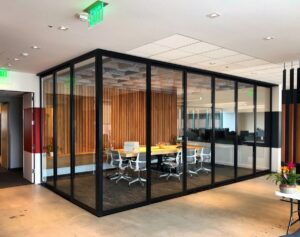Steel treads have become a popular choice in modern architecture, revered for their durability, safety, and aesthetic versatility. As an essential component in staircases and walkways, treads offer a range of benefits that contribute to both the structural integrity and visual appeal of a building. This blog delves into the advantages of treads, highlighting their impact on architectural design and performance.
The Structural Benefits of Steel Treads
One of the most compelling reasons for choosing treads is their unparalleled strength and durability. Steel is renowned for its high tensile strength, which makes it an excellent material for handling heavy loads and enduring high-traffic conditions. This strength ensures that treads can withstand significant wear and tear without compromising safety or performance.
In addition to their strength, treads offer exceptional stability. They are less prone to warping or bending compared to other materials, such as wood or composite alternatives. This stability is particularly important in commercial and industrial environments where safety and structural integrity are paramount. By integrating treads into staircases and walkways, architects and builders can ensure that these elements remain robust and reliable over time.
Another advantage is the inherent fire resistance of steel. Unlike materials that can be susceptible to flames or high temperatures, steel maintains its structural integrity under fire conditions, providing a critical safety feature in buildings. This fire-resistant quality not only enhances the overall safety of the structure but also aligns with modern building codes and regulations.
Aesthetic Appeal of Steel Treads
Beyond their functional benefits, treads offer significant aesthetic advantages that can enhance the overall design of a space. Steel’s sleek and modern appearance complements a variety of architectural styles, from minimalist and industrial to contemporary and traditional. Its versatility allows for creative design solutions that can make a bold statement or seamlessly blend into the existing decor.
Treads can be finished in various ways to achieve different looks. For instance, they can be powder-coated or painted in a range of colours, allowing for customisation that suits the specific design vision of a project. Additionally, treads can be combined with other materials, such as glass or wood, to create visually striking contrasts and textures. This flexibility in design ensures that treads can be adapted to meet diverse aesthetic preferences and project requirements.
The reflective quality of steel also contributes to a space’s overall lighting and ambience. The polished surface of treads can enhance natural light and create a brighter, more open atmosphere. This quality is particularly beneficial in spaces that aim to maximise light and space, such as modern office buildings or contemporary residential interiors.
Maintenance and Longevity
Treads are celebrated for their low maintenance requirements and long lifespan. Unlike wood or other materials that may require frequent upkeep or replacement, treads are designed to withstand the rigours of daily use with minimal intervention. Their resistance to moisture, pests, and other environmental factors means they remain in excellent condition with less frequent maintenance.
The longevity of treads makes them a cost-effective choice in the long run. Although the initial investment may be higher than other materials, the durability and extended lifespan of steel result in fewer replacements and repairs over time. This long-term value is a significant consideration for both residential and commercial projects, where maintaining a high standard of quality and safety is essential.
Environmental Considerations
In addition to their practical benefits, steel treads align with sustainable building practices. Steel is a highly recyclable material, which means that treads can be repurposed or recycled at the end of their lifecycle. This contributes to reducing waste and minimising the environmental impact of construction projects.
Moreover, the energy efficiency of steel production has improved over the years, with advancements in technology leading to more sustainable manufacturing processes. By choosing treads, architects and builders can contribute to environmentally responsible practices while enjoying the material’s performance benefits.
Customisation and Versatility
Treads offer a high degree of customisation, which allows them to be tailored to meet specific design and functional needs. Customised treads can be engineered to fit unique dimensions, load requirements, and design preferences. This versatility makes them suitable for a wide range of applications, from grand staircases in luxury residences to functional stairways in industrial settings.
Architects and designers can work closely with manufacturers to create bespoke treads that align with their vision. This collaborative approach ensures that the final product not only meets technical specifications but also enhances the overall aesthetic of the space.
Conclusion
Steel treads provide a multitude of advantages that make them an excellent choice for modern architectural projects. Their exceptional strength and durability ensure structural integrity and safety, while their aesthetic versatility offers opportunities for creative and visually appealing designs. Additionally, the low maintenance requirements, environmental benefits, and customisation options further enhance their appeal.
As the demand for both functional and aesthetically pleasing building materials continues to grow, treads stand out as a solution that meets the highest standards of performance and design. By incorporating treads into your projects, you can achieve a blend of practicality and elegance that enhances the quality and longevity of your architectural endeavours.




